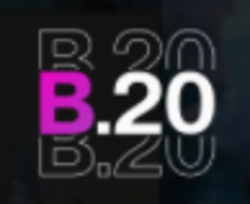Discover the top DeFi projects maximizing returns and leveraging Pendle pools for innovative yield optimization strategies.
Decentralized finance (DeFi) platforms are favored for their transparency, accessibility, and potential for high returns. So it’s not shocking that they’re attracting a growing user base.
Yield optimization is emerging as a key strategy for maximizing returns on crypto investments. Optimization involves managing assets to generate the highest possible returns, often through innovative protocols like Pendle.
Pendle is the DeFi protocol that enables users to trade the future yields of tokenized assets. By splitting yield-bearing tokens into their principal and yield components, Pendle allows for separate trading of these elements.
DeFi platforms leveraging Pendle pools can boost user engagement and adoption, offering sophisticated tools for yield enhancement in a competitive market. And with the introduction of leveraged restaking tokens (LRTs), yield tokens (YTs), and principal tokens (PTs), DeFi platforms offer traders versatile and effective methods for enhancing returns.
Let’s explore the top DeFi projects leveraging Pendle pools.
Marginly
Marginly is a leveraged trading protocol that specializes in using LSTs/LRTs and tokenized yield to democratize complex DeFi strategies and optimize yields. Key features include a comprehensive approach to yield farming, reliability (Marginly is double audited by Quantstamp), a robust risk management system, and a reward system geared toward a future airdrop.
Marginly provides a 1-click interface for leveraged trading and farming, integrating advanced risk management features and DeFi aggregator support.
Users can leverage their positions to maximize returns on Marginly’s various DeFi strategies, including margin trading, yield farming, and restaking.
By leveraging Pendle pools, Marginly users can separate and trade principal components of tokens, thereby enhancing earning potential.
Users can farm the implied APY offered by Pendle PTs by leveraging borrowed WETH to purchase PTs and holding them until maturity. This locks in the APY and generates interest payments for lenders.
Marginly users can also borrow stablecoins instead of ETH to get additional market risk exposure from the LRT price movement relative to the stablecoin. This method also works for farming implied APY on yield-bearing stablecoins such as Ethena’s USDe.
Marginly offers users high-leverage options and effective yield optimization strategies—but like with any DeFi platform, using Marginly leverage involves potential liquidation risks and requires farmers to actively monitor their positions.
Swell Network
Swell offers an LRT model, providing a tokenized version of restaked ETH that can be used in liquid Pendle pools. This non-custodial protocol simplifies DeFi access, enabling users to earn passive income by staking ETH for blockchain and actively validated services (AVS) rewards.
Swell’s restaking model involves rswETH, an ERC-20 liquid restaking token that provides liquidity for users restaking their ETH into protocols like EigenLayer without locking their assets.
Users can manage swETH principal and yield with Pendle. Additionally, they benefit from off-chain EigenLayer points, potentially enhancing returns and integration with EigenLayer.
The system’s complexity might challenge novice users, the off-chain rewards may not appeal to everyone, and the model’s effectiveness is dependent on EigenLayer’s protocols and updates—which could impact functionality.
Gearbox Protocol
Gearbox is a DeFi platform that enables users to leverage their positions across various DeFi protocols, enhancing their yield strategies.
Gearbox allows users to engage in leveraged liquid staking strategies, enhancing their yield opportunities with Pendle’s yield-bearing assets. Users can stake assets like stETH, leveraging their positions to amplify returns.
Gearbox Protocol’s restaking model enables users to leverage their positions by borrowing assets through Credit Accounts.
Gearbox warns users that if the value of the collateral drops significantly, positions may be liquidated. Fluctuations in market conditions can affect the value of LRT and other assets. And borrowing costs may vary, impacting overall profitability.
Contango Protocol
Contango is a DeFi platform enabling users to create leveraged positions and loop various on-chain assets for enhanced trading.
Users can leverage liquid staking assets like stETH, trade Pendle PTs, create delta-neutral strategies, arbitrage stablecoin rates, and farm rewards. On Contango, PTs from Pendle represent the principal portion of an underlying yield-bearing asset.
Leveraged trading can lead to complete fund loss due to sudden price changes and volatile funding rates. Liquidity varies across different markets; highly liquid asset pairs like ETH/DAI on Aave differ from pairs such as PTeETH/ETH on Silo. Contango’s reliance on a multisig model for contract upgrades introduces further risk, as the protocol is not yet fully decentralized.
Stella Protocol
Stella is a leveraged strategies protocol that allows users to take leverage on supported DeFi strategies without paying borrowing costs.
Stella’s Pay-As-You-Earn (PAYE) model replaces traditional interest rates by aligning the incentives of borrowers and lenders. Stella’s users can leverage the Pendle LP strategy on LSTs. This feature allows users to leverage their LST positions using single-sided ETH.
Stella’s Hyper-Strategy offers several benefits, including higher yields compared to standard strategies and access to trending assets.
But it’s important to note that this strategy carries risks, underscoring the need for users to evaluate their risk tolerance and smart contract vulnerabilities, plus the fact that the protocol is not yet fully decentralized.
Ion Protocol
Ion is a price-agnostic lending platform that supports staked and restaked assets using provable validator data.
Ion’s staking model allows users to deposit LSTs into asset-specific vaults to earn rewards. Ion enables its users to receive yields while leveraging ETH reserves for value determination.
Ion Protocol carries several risks inherent in its design and operations. Smart contract risks are present despite thorough audits and formal verification measures. Borrowers may face liquidation if a significant correlated slashing event reduces the ETH reserves of a provider’s validator set or if they fail to make timely interest payments.
Innovating on yield optimization
The DeFi landscape continues to evolve, leading to the emergence of numerous strategies for optimizing yields. While these platforms offer significant opportunities for enhanced returns, users must carefully consider the associated risks, including smart contract vulnerabilities, liquidation risks, and the complexities of integrating with various DeFi protocols. As the market grows, these projects exemplify the potential for sophisticated financial strategies to drive broader adoption and innovation in digital finance.







































